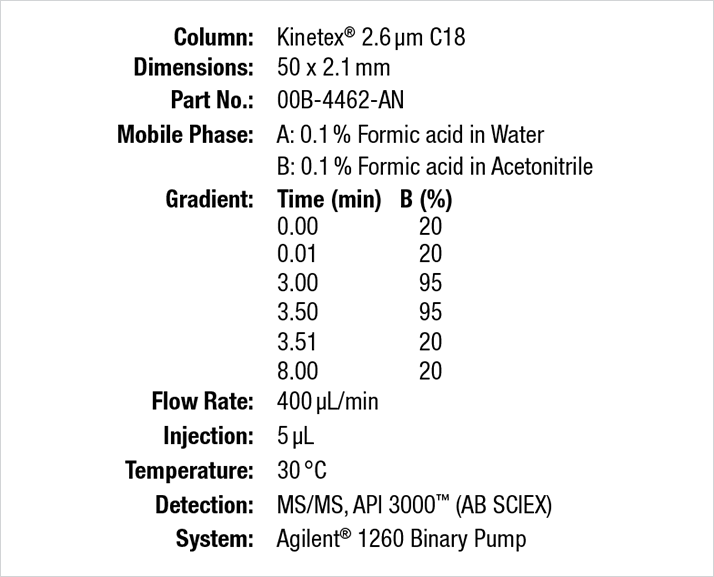Introduction
Simplified Liquid Extraction (SLE), also known as Supported Liquid Extraction, has been developed as an alternative sample preparation method to liquid-liquid extraction (LLE) to remedy some of the drawbacks including the formation of emulsions, difficulty in automating, and the use of large amounts of hazardous solvents. The particle size of the solid support in an SLE material mimics the shaking event in a LLE workflow and creates micrometer scale containers for aqueous sample. By increasing the surface area and reducing the diffusion distances, one promotes a rapid and efficient extraction that negates the necessity of manual phase separation. Novum, a synthetic SLE sorbent, yields results that are identical in most cases to contemporary diatomaceous earth SLE products, but is not restricted by limitations that are associated with natural resources such as availability and variation in composition. In this technical note we will investigate a case study using a corticosteroid panel to demonstrate that Novum is capable of achieving equivalent recoveries, while also offering the analyst the added option of additional clean up and phospholipid removal that cannot be achieved on traditional diatomaceous earth SLE products. We also offer general tips that can help with the method development process for other compounds of interest.

Materials and Methods
All reagents and solvents were HPLC or analytical grade. Analyses were performed using an API 3000™ LC/MS/MS (AB SCIEX, Framingham, MA).
Sample Preparation
Novum SLE 12 cc Tube, part no. 8B-S138-KDG
Pretreatment
Three samples were prepared for extraction, each contained 1800 μL diluted (1:1) plasma or spiked plasma plus A, B, or C (below) A. + 0 μL water
B. + 200 μL water
C. + 400 μL water
SLE Procedure
1. Load sample onto the Novum SLE sorbent
2. Apply 5” Hg vacuum for 10 seconds
3. Wait for 5 minutes
4. Apply 2x 5 mL DCM and allow to elute under gravity
5. Apply 5” Hg vacuum for 10 seconds to complete elutionAdd 10 μL IS solution to each extract except the blank sample. Blow down with N2 (room temperature for 60 minutes). Reconstitute with 200 μL ACN/Water (20:80) by vortexing the tube at 1000 rpm for 2 minutes.
 HPLC Conditions
HPLC Conditions




